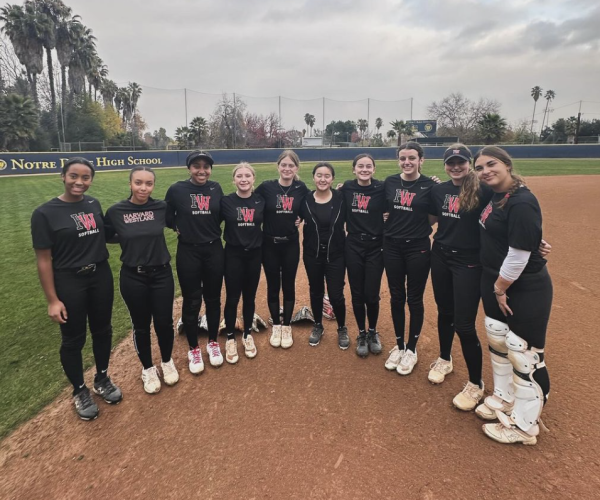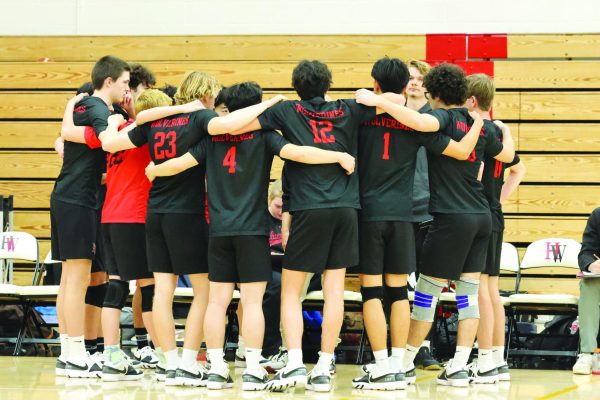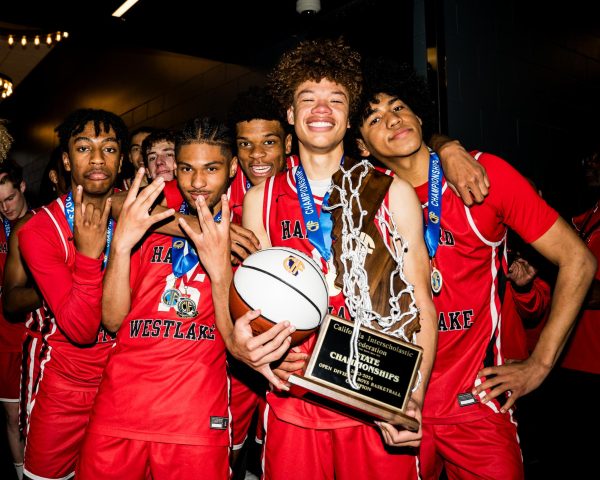Cardiac Concern
Damar Hamlin collapsed in a game against the Bengals on Jan. 2.
February 12, 2023
When Buffalo Bills’ Strong Safety Damar Hamlin suffered cardiac arrest in the first quarter of a game on Jan. 2, it sent shockwaves through the sports community. After a hit from Bengal’s receiver Tee Higgins momentarily stopped the 24 year old’s heart, fans in the stands and at home watched in horror as Hamlin collapsed. As reported by ABC, Hamlin spent a week at The University of Cincinnati Medical Center before being transferred to Buffalo General and discharged on Jan. 22.
Head of Sports Medicine Dunford Rodill said Damar Hamlin’s collapse has prompted discussion about the school’s safety precautions regarding cardiac injuries for athletes. He said the athletics department takes cardiac issues seriously and has a set protocol in case of an emergency during practices and games.
“One of our worst nightmares is for a cardiac issue to happen during a game,” Rodill said. “After this event, we started thinking about what we would do in a situation like that. Fortunately, here at Harvard-Westlake, we do have an emergency action plan that is set in place for any emergency situations that might arise during a game or practice. We also make sure that we have the proper equipment in place for whatever situations that may arise.”
Rodill said precautions for athletes’ cardiac safety are taken even before a student joins the team, including examining family history and having students make appointments with cardiologists.
“Everyone has to have a pre-participation exam before they even play a sport at Harvard-Westlake,” Rodill said. “A part of the screening is a cardiac soft screen. So, [doctors] look at family history and if there’s anything in their history that might predispose them to a cardiac issue, then they get sent to the cardiologist.”
Rodill said the school evaluates a student’s cardiac report carefully if they are flagged to have potential cardiac issues sothat the student can take appropriate measures.
“We’ve actually had some cases where, before a student even played, we would have a report from our Community Health Office, that someone is red flagged to have a cardiac issue,” Rodill said. “Then, we look at notes from their cardiologist and whether or not they’re cleared to participate. Anytime there’s a red flag like that, we always do our best to check in with the athlete to make sure that they’ve done the necessary steps before they even step foot into their sport.”
Rodill said checking football equipment is properly fitted is also important, especially due to the physical nature of the sport.
“At the beginning of the year, we always make sure that the equipment is properly fitted,” Rodill said. “Our equipment manager does a really good job with that, meaning checking that helmets are the proper size, making sure that the shoulder pad is properly fitted for [players’] specific position. [Equipment] is checked continuously to make sure that players are in the right protective equipment so that they can decrease the risk of [sustaining an] injury.”
Sudden cardiac arrest is the leading cause of death among student athletes, and according to defibtech.com, administering immediate CPR and using AEDs can double or triple someone’s chance of survival. Also, having athletic trainers present during practices and games significantly increases survival chances from cardiac arrest.
Rodill said athletic trainers at the school are trained to treat cardiac related injuries specifically.
“As far as heart issues, we make sure we have an AED and we’re all CPR certified,” Rodill said. “So, in an instance where a cardiac arrest happens, we are trained for that scenario.”
Although Hamlin’s collapse was cardiac related, Rodill said that the event has led the Sports Medicine Department to increase preparedness for all types of injuries.
“After this event it’s mainly been revisiting our current protocols and practicing our emergency action plan,” Rodill said. “Some of the things we’ve talked about here as a staff are just practicing different scenarios, whether it’s dealing with a broken leg, a cervical injury, or practicing spine boarding, applying CPR, AED pads, and more. That’s something that is going to be really important for us, just to keep making sure that we are doing our job.”
Rodill said the entire sports medicine department has practiced for all situations so that they can be as prepared as they can possibly be.
“Just like the football players practice, that’s their sport, we also have to do a really good job with practicing for these scenarios so that when they do happen, we are prepared for it rather than scrambling trying to figure out what to do,” Rodill said.
As well as the risks to Hamlin’s health, this incident shines a light on the anxieties many athletes feel about the dangers of football. Although the season is over, Hamlin’s injury has affected some of the members of the school’s football team.
Varsity Wide Receiver Boaz Maydew ’24 said hearing of Hamlin’s collapse was alarming to him.
“It was pretty scary,” Maydew said. “I mean [injury] is part of the game but it was definitely scary to see a player get hurt so seriously.”
Maydew said the risks of the game is on his mind on and off the field. He said after experiencing a mild injury during the off-season and hearing of Hamlin’s injury, he is more cognizant of the dangers of football despite the school’s precautions at every single game.
“Injury is part of every sport, especially football, which is something I know since I was injured this season,” Maydew said. “”But hearing of Hamlin’s collapse was still pretty shocking and made me more conscious of taking measures to be safe.”
Varsity Offensive Tackle Michael Schneider ’24 also said he was concerned after hearing of Damar Hamlin’s collapse.
“When I am out on the field, I always have a bit of fear running through my head that I could get seriously injured and experience permanent consequences,” Schneider said. “It’s a bit scary hearing about Damar Hamlin since he is a professional player in the NFL—if he’s collapsing on the field and facing serious health risks, what could that mean for high school players?”
Although many football programs have been criticized for their carelessness with the safety of their players, Maydew says the athletics department takes the dangers of football seriously.
“At every game, there are three trainers who deal with sprained ankles and stuff like that, but for any head injuries there is a whole protocol in place,” Maydew said. “They are really good about [taking safety] precautions.”









































